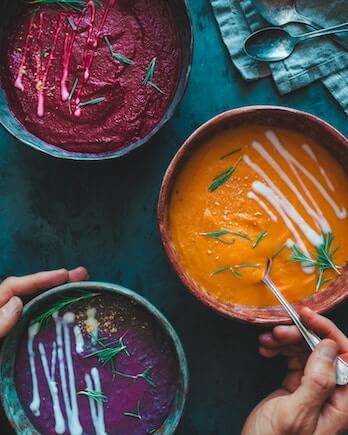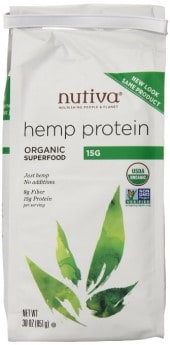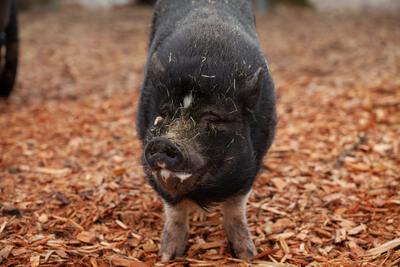
Where do you get protein?
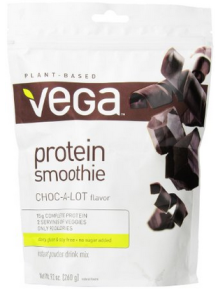
The conventional diet guidelines suggest that humans should acquire a large amount of their protein quotas from meats and animal sources like chicken, eggs, etc... unlike a pure vegetarian diet which acquires its intake from plant protein sources.
Can the pure vegetarian (vegan) diet provide enough protein for sound human health?
The medical community agrees about the distinct health advantages of a pure vegetarian diet, but the protein question stays with us because animal products have been promoted by the industries that produce them, sell them, and want people to think of them as the best source of protein. This assumption is wrong and can be harmful, as a quick study of the facts about daily requirements of protein and nutrition shows.
The Importance of Protein
Protein is essential to human health. Our bodies - hair, muscles, fingernails, and so on - are made up mostly of protein.
As suggested by the differences between our muscles and our fingernails, not all proteins are alike. This is because differing combinations of any number of 20 amino acids may constitute a protein. In much the same way that the 26 letters of our alphabet serve to form millions of different words, the 20 amino acids serve to form different proteins.
Protein is crucial for many cellular activities in the body. On top of being used to build muscle and other tissue, they are also needed for: [13]
- Synthesizing nucleic acid
- Making hormones
- Your immune response.
How Much Protein Do You Need?
As babies, our mothers' milk provided the protein we needed to grow healthy and strong. Once we start eating solid foods, non-animal sources can easily provide us with all the protein we need. Only 10 percent of the total calories consumed by the average human being need be in the form of protein. [2]
The Recommended Dietary Daily Allowance for both men and women is 0.8 grams of protein for every kilogram (2.2 pounds) of body weight. [3] People with special needs (such as pregnant women) are advised to get a little more.
Vegans should not worry about getting enough protein; if you eat a reasonably varied diet and ingest sufficient calories, you will undoubtedly get enough protein. Protein deficiency, or "kwashiorkor," is very rare in the U.S. and is usually diagnosed in people living in countries suffering from famine. [4]
By contrast, eating too much animal protein has been directly linked to the formation of kidney stones and has been associated with cancer of the colon and liver. [5], [6] By replacing animal protein with vegetable protein, you can improve your health while enjoying a wide variety of delicious foods.
What if you're trying to build muscle?
One myth that won't seem to completely die in the fitness community is that you should aim for 1 gram per lb of body mass in order to optimize muscle gain. Even though this is possible on a vegan diet, it's difficult. More importantly, it's completely unnecessary.
Study after study have shown that the upper limit of useful protein intake is around 0.82g per lb of body mass, but that you can still build significant amounts of muscle with less. [14]
This is relatively easy to obtain on a vegan diet. Some of the strongest (and largest) athletes on the planet have continued to get stronger and larger after making the diet switch.
The Myth of "Incomplete" Protein
There's one more common nutrition myth that many people are concerned about when considering switching to a vegan diet.
Amino acids are a fundamental part of our diet. While half of the 20 can be manufactured by the human body, the other 10 cannot, and are called essential amino acids. [1]
A "complete protein" source is said to contain sufficient quantities in all essential amino acids.
The myth is that plant sources are incomplete sources of protein, and therefore will cause health issues.
Even though this myth has been credibly disproved for a long time, it still lingers around.
If you got all your protein from one specific plant source, it's possible to be a bit deficient in one or two amino acids (most commonly "lysine"). Note that many plant proteins are complete sources of protein.
But no one has only one protein source in their diet. You combine several protein sources every day. It's almost impossible to come up with a realistic vegan diet that is deficient in any essential amino acid. [15]
It's not something that you need to be actively planning around or worrying about unless you're literally only eating a handful of foods all the time.
The Best Plant-Based Protein Sources
Tell anyone that you're vegan or vegetarian, and the first question you'll usually face is, "where do you get your protein?"
You might have this concern yourself.
When you've lived all your life being told and thinking that animal products are the best source of protein, you don't pay attention to other options.
So at first it's really uncomfortable, but then you recognize other protein sources and realize that you actually have a lot of options.
Let's go over the main categories of plant-based protein sources.
Soybean and Soy Products
Legumes are great for protein, but the soybean deserves special mention, for it contains all the essential amino acids and surpasses all
other food plants in the amount of protein that it can deliver to the human system. In this regard, it is nearly equal to meat.
[7]
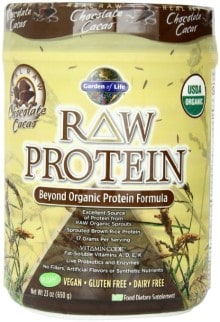
The many different and delicious soy products (such as tempeh, soy "hot dogs" and "burgers," Tofutti brand "ice cream," soy milk, and tofu) available in health and grocery stores suggest that the soybean, in its many forms, can accommodate a wide range of tastes.
Note: Some people are "soy intolerant" and would be better off with other sources (below) of protein. Be sure to check with your doctor about getting testing for soy allergies, especially if you don't feel good after eating soy products.
Other rich sources of non-animal protein include legumes, nuts, seeds, yeast, and freshwater algae. Although food yeasts ("nutritional yeast" and "brewer’s yeast") do not lend themselves to forming the center of one's diet, they are extremely nutritious additions to most menus (in soups, gravies, breads, casseroles, and dips). Most yeasts get about 50 percent of their calories from protein.[8]
It's important to note that most nutritionists, dieticians, and official sources agree that we need only 2.5%-10% of our calories from protein [9],[10],[11], and ALL vegetables offer us more than that[12].
Legumes
Legume is a term that covers a variety of plants. In general, when we talk about legumes, we're referring to:
- Beans
- Peas
- Lentils
Beans are one of the best sources of protein, and nutrition in general, that a plant-based diet is usually centered around.
The most popular beans include: Garbanzo beans, kidney beans, lentils, lima beans, navy beans, soybeans, split peas.
Grains
The term grain also covers a variety of plants.
- Wheat
- Rice
- Quinoa
- Buckwheat
- Millet
- ...and more.
The most popular grains with reasonably high levels of protein include: Barley, brown rice protein, buckwheat, millet, oatmeal, quinoa, rye, wheat germ, wheat, wild rice
Take a look at the nutritional profile for a slice of bread:
- Calories: 79
- Fat: 1 gram
- Carbohydrate: 15 grams
- Protein: 2.7 grams
Clearly grains aren't going to be a primary source of protein, but getting an extra 6-12 grams of protein from a few servings of grains can help you reach your protein goals.
Vegetables
When you think of plants, vegetables are usually the first things to come to mind.
In general, vegetables are low calories, but many have solid macronutrient profiles.
For example, take mushrooms (per 100 grams):
- Calories: 22
- Fat: 0.3 gram
- Carbohydrate: 3.3 grams
- Protein: 3.1 grams
Just over half of mushrooms' calories come from protein. If you eat a diet rich in vegetables, it's not uncommon to get 20-40 grams of protein per day from them. Plus you'll get a ton of fiber, vitamins, and minerals.
Here are some of the best sources of vegetable protein: Artichokes, beets, broccoli, brussels sprouts, cabbage, cauliflower, cucumbers, eggplant, green peas, green pepper, kale, lettuce, mushroom, mustard green, onions, potatoes, spinach, tomatoes, turnip greens, watercress, yams, zucchini.
Nuts and Seeds
A final main area of plant foods is nuts and seeds. In general, nuts and seeds are calorie-dense because they have a lot of fat in them.
Additionally, they contain reasonable amounts of carbohydrates and protein. For example, take almonds(per 100 grams):
- Calories: 576
- Fat: 49 gram
- Carbohydrate: 22 grams
- Protein: 21 grams
21 grams of protein is quite a bit. The issue is usually the high amount of calories. That being said, having 50-100 grams of nuts or seeds per day can play a vital part in reaching your protein goals - just try not to overdo it.
Some of the best sources of protein in nuts and seeds: : Almonds, cashews, filberts, hemp seeds, peanuts, pumpkin seeds, sesame seeds, sunflower seeds, walnuts (black)
One excellent ingredient to look for is hemp seed protein. Hemp seed is an nutritious dietary source of easily digestible gluten-free protein. It provides a well-balanced array of all the amino acids, including 34.6 grams of protein for each 100 grams. The fatty acid profile of the hemp seed is extremely beneficial, containing omega-6 and omega-3 fatty acids in a virtually ideal ratio. Other beneficial aspects of hemp seed include a strongly favorable unsaturated-to-saturated fat ratio; a high content of antioxidants; and a wide variety of vitamins and minerals.
Protein Powder
Protein powder is completely optional when it comes to a healthy, high protein vegan or vegetarian diet.
However, it's very convenient, especially if you're an athlete.
A vegan protein powder is a powder that is a highly concentrated amount of protein that is derived from those plant-based sources that
we've looked at above. They usually have 20-30 grams of protein per serving, with 150-200 calories overall.
The most common sources of protein for these powders are:
- Pea (by far the most common)
- Brown Rice
- Hemp
- Soy
Products typically mix 1-3 of these protein sources together to get nice balanced amino acid profile.
You mix a scoop of the powder with a liquid like almond milk or a smoothie, or you can even use it to bake in some recipes.
There are lots of different vegan protein powders out there, all with their own unique blend of ingredients and flavors.
Can Athletes Get Enough Protein?
The answer is a resounding YES.
Many world-class athletes maintain a vegan diet, and they span across just about every sport.
Scott Jurek is an accomplished vegan ultramarathon runner, while Patrik Baboumian is a one of the strongest men in the world. Baboumian has continued to set world records after going vegan, so if anything, it's helped.
Then consider that NFL players are among the largest and strongest athletes in the world. Around 10 players on the Tennessee Titans went vegan during the 2017-2018 season. They managed to get to the playoffs as well.
If they can perform well on a vegan diet, there's really no excuse for anyone else.
Last edited by Dale C. Feb 2018.
More Information: Vegan Nutrition Basics, Advanced Nutrition
References
1 University of Arizona, Department of Biochemistry and Molecular Biophysics, “Amino Acids Problem Set,” The Biology Project, 25 Aug. 2003.
2 Paula Kurtzweil, “‘Daily Values’ Encourage Healthy Diet,” U.S. Food and Drug Administration, 2003.
3 Food and Nutrition Board, “Dietary Reference Intakes for Energy, Carbohydrates, Fiber, Fat, Protein and Amino Acids (Macronutrients),” National Academy of Sciences (2002): 10-1.
4 U.S. National Library and the National Institutes of Health, “Kwashiorkor,” MEDLINEplus Medical Encyclopedia, 11 Jul. 2002.
5 Gary C. Curhan et al., “A Prospective Study of Dietary Calcium and Other Nutrients and the Risk of Symptomatic Kidney Stones,” The New England Journal of Medicine 328 (1993): 833-8.
6 Kathleen M. Stadler, “The Diet and Cancer Connection,” Virginia Tech, Nov. 1997.
7 Gertjan Schaafsma, “The Protein Digestiblity-Corrected Amino Acid Score,” Journal of Nutrition 130 (2000):1865S-1867S.
8 USDA National Nutrient Database for Standard Reference, “Leavening Agents, Yeast, Baker’s, Active Dry,” 16 Jul. 2003.
9 Diet for a New America, John Robbins, 1987, p. 172, citing the American Journal of Clinical Nutrition
10 Protein and Amino Acid Requirements in Human Nutrition (PDF), World Health Organization (2002), p. 126. Recommendations are an "average requirement" of 0.66 g of protein per kg of ideal body weight, and a "safe level" of 0.86 g/kg. Percentages of protein vs. total calories were calculated by applying these figures for Estimated Energy Requirements as per the Dietary Reference Intakes, for a 5'5" woman and a 5'11" man, each 30 years old and 24.99 BMI, at various activity levels.
11 Dietary Reference Intakes, Food and Drug Administration. (The recommendations for protein are 56g/day for adult males and 46 g/day for adult females. The suggested caloric intake is 2301-3720 for a 5'11" man and 1816-2807 for a 5'5" woman. At 4 calories of protein per gram, this works out to 8.0-12.3% protein for men and 6.6-10.1%)
12 USDA National Nutrient Database for Standard Reference (accessed August to December 2009)
13 Hermann, Janice R. "Protein and the Body"(PDF). Oklahoma Cooperative Extension Service, Division of Agricultural Sciences and Natural Resources - Oklahoma State University: T–3163–1 – T–3163–4.
14 The myth of 1 g/lb: Optimal protein intake for bodybuilders (accessed February 2018).
15 Young, V. R.; Pellett, P. L. (1994-05-01) [1994]. ABSTRACT. "Plant proteins in relation to human protein and amino acid nutrition". The American Journal of Clinical Nutrition. 59 (5 Suppl): 1203S–1212S. ISSN 0002-9165. PMID 8172124.Young, V. R.; Pellett, P. L. (1994-05-01) [1994]. FULL ARTICLE - TABLE 11. "Plant proteins in relation to human protein and amino acid nutrition" (PDF). The American Journal of Clinical Nutrition. 59 (5 Suppl): 1203S–1212S. ISSN 0002-9165. PMID 8172124.
VEGETABLES: Average of Broccoli 27.2%, Carrots 8.7%, Celery 17.3%, Corn 13.4%, Cucumber 17.3%, Green Beans 21.6%, Lettuce iceberg 25.7%, Mushrooms white 31%, Onions 12.4%, Peas 28.8%, Potato 10.8%, Spinach 49.7%, Tomato 19.6% (accessed December 2009)
Partial information reprinted with permission from People for the Ethical Treatment of Animals.
Disclaimer: The views expressed in articles published on HappyCow are those of the authors alone. They do not represent the views or opinions of HappyCow nor its staff.
Some links in this article are possibly part of Amazon's affiliate program, so when you make a purchase a small amount will go to support the HappyCow website.
This information is not intended to replace the diagnosis, treatment and services of a physician. Any recommendations and indications are at the user's discretion. For severe or life-threatening conditions, always seek immediate medical attention. While we work to ensure that product information is correct, and list only products containing vegetarian ingredients, on occasion manufacturers may alter their ingredient lists. Actual product packaging and materials may contain more and/or different information than that shown on our Web site. We recommend that you do not solely rely on the information presented and that you always read labels, warnings, and directions before using or consuming a product. For additional information about a product, please contact the manufacturer. HappyCow assumes no liability for inaccuracies or misstatements about products.
